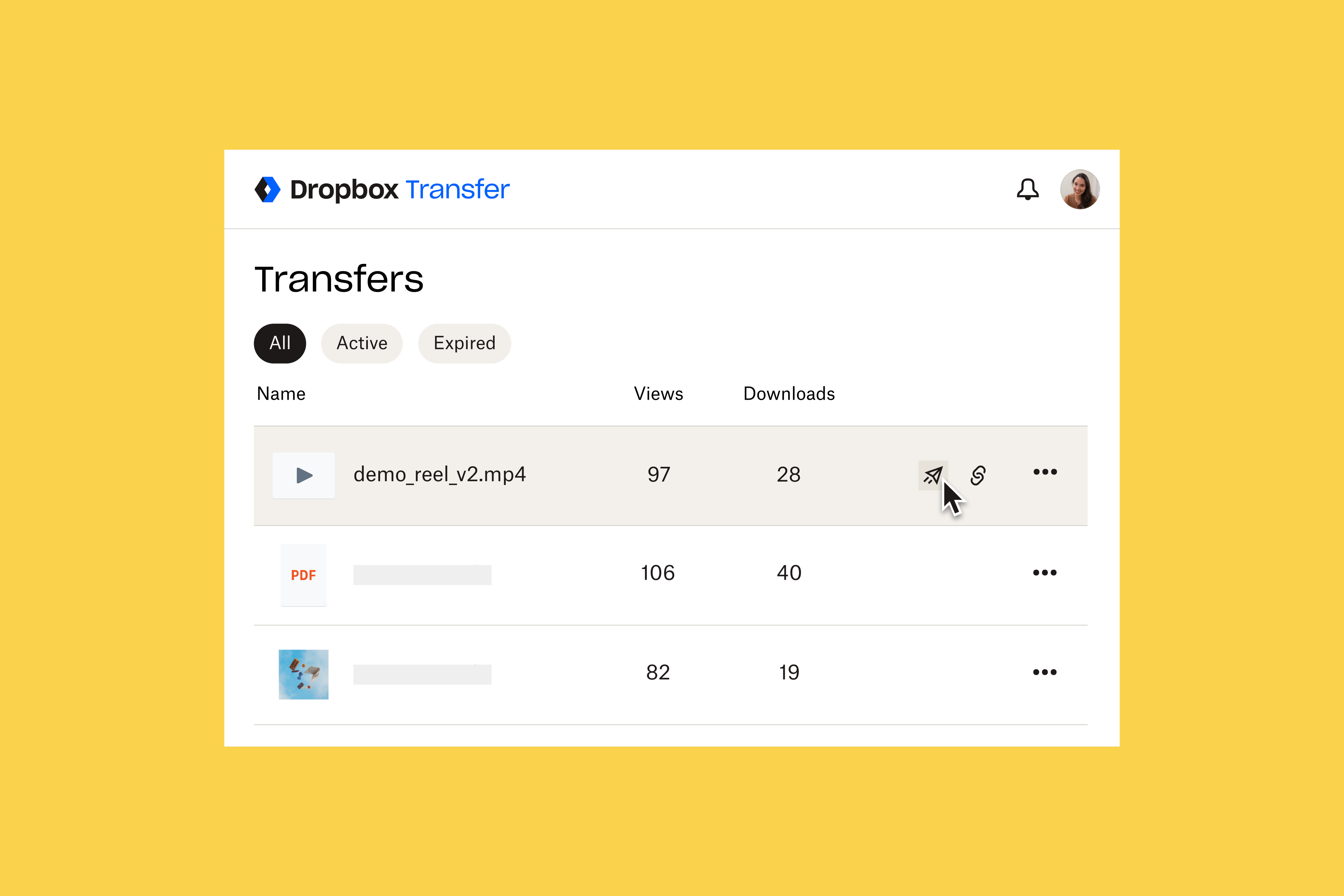This may sound like a familiar scenario—it’s the middle of a busy week, you’re rushed off your feet getting a project over the line, and the creative team have exported the final video edit. All that’s left is for you to drop the file into an email to the clients and hit send. Only, something’s wrong—the file’s too big.
While many of us use email every day for work, we might not always need to send large files, making it a nasty surprise when you need to attach a file, only to find that you can’t.
So what do you do when a file is deemed “too big” for email?
In this guide, we’ll explain why emails have file size limits, and explore three methods for you to try when sending a large video over email, including file transfer tools like Dropbox Transfer.
But before we delve into that, let’s get straight to the burning question—is it possible?
Can you send large videos through email?
The short answer is yes, you can absolutely send videos and other large files over email.
While there are limitations to what you can attach directly to an email, other solutions allow you to attach compressed versions of the file, or even include a link to the full-sized file to retain quality.
Here’s a quick summary of the methods we’ll cover in this guide:
Method |
Quick summary |
When to use it |
|
|
|
|
|
|
|
|
Limitations of email attachments
Before we go into the solutions, it’s worth taking a moment to understand why attaching a file directly to an email often doesn’t work.
File size
As we’ve already covered, file size limits are a major drawback when emailing files as attachments.
The exact file limits vary, but most fall between 10-25 MB. For example, take a look at the attachment file size limits for some of the most popular email platforms:
- Gmail—25 MB
- Microsoft Outlook—20 MB
- iCloud Mail—20 MB
- ProtonMail—25 MB
- AOL Mail—25 MB
- Yahoo! Mail—25 MB
- GMX—50 MB
While these are fine for sharing documents, spreadsheets, or other small file formats, high-resolution images and video will quickly surpass the permitted file size.
Security
It isn’t just about the convenience of sharing larger file sizes, though. The process of sending files as email attachments comes with security implications, too.
To illustrate this, let’s look at an example. Imagine you have a briefcase containing all of the files you’d like to send. Attaching these files to an email is the equivalent of throwing these over a wall to the recipient, who is standing on the other side.
As soon as you’ve thrown that briefcase, it’s out of your hands—even if you realize that you’ve sent the wrong files, or sent it to the wrong person.
Now, imagine the same scenario, only you’re leaving the briefcase in a remote, PIN-protected locker. Not only can the recipient access and open the locker with the details you shared, but you can also remotely change the access code or change the recipient entirely.
It’s a simple example, but one that helps to illustrate exactly why file attachments in emails can lead to unfortunate security risks when mistakes inevitably happen. By using external tools, you provide an extra layer of security and control, giving you peace of mind when sharing your work.

Access and version control
We’ve all been there—you’ve just hit Send on an important email, only to realize there’s an error in the attached file or video.
With cloud-based file sharing, you can simply fix the error in the shared file without needing to send a follow-up email. Similarly, modern file sharing solutions provide much greater control over who can access your files, and what they can do with them.
So if you’re sharing your latest edit with the team and need to make sure the account managers can see it, but only your fellow editors can make adjustments, all you have to do is set access permissions for each recipient.
Of course, if you’re looking for advanced version control and feedback tools, a purpose-built video feedback platform like Dropbox Replay could be the ideal solution for your needs.
How to send large videos via email
Sending a large video over email is simple, thanks to the variety of options available to you.
In this part of the guide, we’ll cover the following three methods, all of which are viable depending on your goal:
- Share it over cloud storage—with a link to files on your Dropbox cloud storage or equivalent
- Send a separate, downloadable copy—with a large file transfer tool like Dropbox Transfer
- Attach a compressed file—if sharing a link isn’t possible, sacrificing quality as a result
Share it over cloud storage
With a cloud storage solution like Dropbox, you can send long videos without needing to upload or attach anything. Just copy a link to the file in your cloud storage, paste it into your email, and click send—done!
When you share a link to a file in your cloud storage, you are sharing access to the same instance of the file that you see when you open it. This means that any changes you make will be visible to the recipient of the link, even if they are made after you have sent the email.
This can be perfect for sharing a work-in-progress file with a colleague or collaborator.
If you don’t want someone to edit the file, you can set access privileges, too. This gives you complete control over who can see your video, as well as what they can do with it.
Send a copy with a large file transfer tool
If you don’t have a need for all the features cloud storage offers, but still need to deliver final assets, large file transfer tools like Dropbox Transfer are the ideal platform for sending long videos.
Simply drag and drop up to 100 GB of files into the upload window in Dropbox Transfer, select your options, and share—either by sending an email with the link directly from Transfer, or manually copying the link into an email of your own. Your recipient will then be able to download a copy of the files from the link they receive.

With Dropbox Transfer, you’re in complete control of your files and always fully informed of their status. You can:
- Deliver copies to prevent unwanted edits
- Control access with password protection
- Set link expiration dates to encourage downloads
- Confirm delivery with download notifications
Why wait until your client watches the video to make a first impression? With Dropbox Transfer, you can customize your download page with a background image and logo of your choice.
Attach a compressed file
Wherever possible, a link-based file sharing solution like the two covered above will be your best bet for sending video files.
There may, however, be situations where you aren’t able to use a link to share your video. In these circumstances, you can look into compression as a way to reduce your video’s size to fit within your email client’s limits.
Video compression is effectively the process of stripping things out, or making them smaller, in order to reduce the overall file size. This might include:
- Reducing the resolution of the video, from 1080p to 720p, for example
- Reducing the frame rate, making it appear choppier and less smooth as a result
- Changing other technical factors, like colors or encoding
If you want to compress a video, there are a few ways to do this:
- Using built-in software like QuickTime, if you’re using a Mac
- With third-party tools like VLC Media Player
- Sending videos to a .zip folder, which can help when sending collections of files
Be warned: Your video's quality will be reduced when using compression to reduce the file size.
If video quality is important to you, consider using cloud storage link sharing or a file transfer tool like Dropbox Transfer instead.
Send full-quality large videos over email, with Dropbox
Whether you’re sending a copy or sharing a link to collaborate, Dropbox has all of your needs covered when it comes to sending long videos via email.
To get started, either share a link from your cloud storage or head over to Dropbox Transfer and start adding files.
